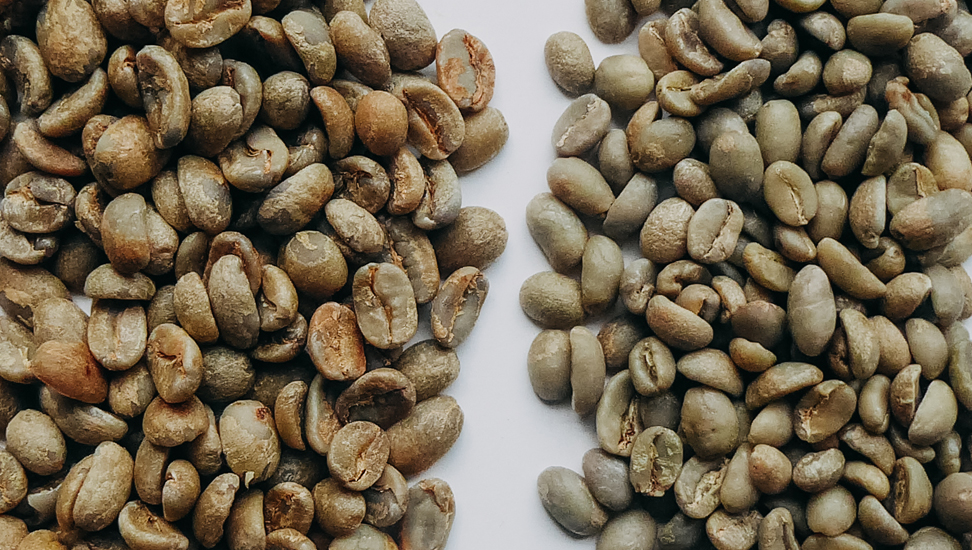The Latest
Differences in How Coffee Is Processed
(Image: coffee on the left was Honey processed and on the right was Washed.)
The method that freshly picked cherries are processed into green coffee beans — ready for shipment and eventual roasting — creates distinct differences in the way coffee tastes. Coffee beans are the pit/seed of cherries that grow on plants the size of a large shrub. When the coffee cherries are harvested, the seed/bean must be separated from the cherry fruit and mucilage before it is roasted. All coffees, regardless of the processing method, are milled or hulled to remove the last layers of skins that protect the inner bean.
Traditionally, coffee producers have used two main techniques for processing their beans: natural (or dry) and washed. The honey (or pulped natural) process is a hybrid that combines elements of both techniques to create new differentiation in flavor.
Washed Coffee
In the washed process, beans are completely de-pulped, removing all of the cherry fruit. Then, they’re soaked and allowed to ferment for 12 – 72 hours before being washed clean of any remaining fruit and dried. It’s probably the most common method for preparing green coffee beans. Washed process coffees usually have a bright, clean taste. Most Central and South American coffees use this method. Most East African coffees are also washed. Washed coffees focus solely on the bean. They let you taste you what’s on the inside, not the outside.
Washed coffees depend almost 100% on the bean having absorbed enough natural sugars and nutrients during its growing cycle. This means the varietal, soil, weather, ripeness, fermentation, washing, and drying are absolutely key. When looking at washed coffees, it becomes apparent that the country of origin and environmental conditions play a vital role in adding to the flavor.
Natural or Dry Process Coffee
This is the most traditional process method. In the natural or dry process, whole coffee cherries are left to dry in the sun, leaving the fruit on the bean, allowing it to “raisin-
The natural process, also known as the dry process, is a back-to-basics approach that stems from Ethiopia. The fruit is left on the bean, and there’s little disruption to the coffee while it dries. Although it needs less investment, it still requires certain climatic conditions to ensure the drying of the fruit and seed in time. Over time, the natural process has become considered a lower-quality method that can lead to inconsistent flavors.
Honey / Pulped Natural Processed Coffee
Pulped natural or honey process is a method in which the fresh coffee cherries are de-pulped, but allowed to dry without fermentation or washing. Some of the fruit (mucilage) is still there, but not nearly as much as in the natural process. In the cup, Honey coffees tend to be more complex than their washed analogs, but not as fruity as natural coffees.
When done right, honey processed coffee can literally taste like someone has put honey and brown sugar in your cup of coffee — although the name actually comes from how sticky the beans get during processing. In many ways, this type of coffee is halfway between a washed coffee and a natural process coffee: it’s fruity, but not in as exaggerated a way as some naturals.
Wet Hulled
Wet hulling, or
The middleman then sells the coffee to a collector or mill, where it is further dried to 25–35% moisture content and sent through a wet-huller to remove the parchment layer. Because the bean has not yet dried and shrunk away from the parchment, the friction required at this stage can damage the bean, which is still moist and pliable. The mill then air-dries the hulled coffee to 12–13% moisture. Without the protective parchment layer, the coffee dries quickly, but it’s exposed to wider temperature variation as well as ambient yeast and bacteria.


